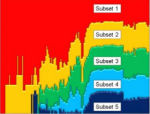A paper by Soon et al 2018 found that temperatures in rural China in the 1940s were higher than at the present, but other researchers found the recent period was much warmer. There are few temperature stations in the 1940s and most have become much more urbanized and subject to the urban heat island effect (UHI). This summary of the paper by Soon and 7 others ranked all the Chinese station by how urbanized they are. The mostly rural stations had the highest temperatures in the 1940s, and the most urbanized stations had the warmest recent period. The paper found that the homogenizing algorithms that are supposed to remove the UHI effect from the records actually blends the effect over all stations, which increases the temperatures of the least urban records. The authors wrote The 1940s warm period seems to have been a real phenomenon in China. Climate models fail to reproduce it.
See a preprint version of the paper. (new window)
ABSTRACT
Most estimates of Chinese regional Surface Air Temperatures since the late-19th century have identified two relatively warm periods 1920s-40s and 1990s-present. However, there is considerable debate over how the two periods compare to each other. Some argue the current warm period is much warmer than the earlier warm period. Others argue the earlier warm period was comparable to the present. In this collaborative paper, including authors from both camps, the reasons for this ongoing debate are discussed. Several different estimates of Chinese temperature trends, both new and previously published, are considered. A study of the effects of urbanization bias on Chinese temperature trends was carried out using the new updated version of the Global Historical Climatology Network (GHCN) version 4 (currently in beta production). It is shown that there are relatively few rural stations with long records, but urbanization bias artificially makes the early warm period seem colder and the recent warm period seem warmer. However, current homogenization approaches (which attempt to reduce non-climatic biases) also tend to have similar effects, making it unclear whether reducing or increasing the relative warmth of each period is most appropriate. A sample of 17 Chinese temperature proxy series (12 regional and 5 national) is compared and contrasted specifically for the period since the 19th century. Most proxy series imply a warm early-20th century period and a warm recent period, but the relative warmth of these two periods differs between proxies. Also, with some proxies, one or other of the warm periods is absent.
©2002-2024 Friends of Science Society
